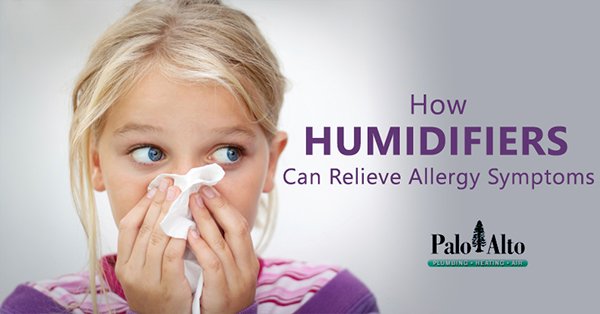Humidifiers Can Help Relieve Your Allergy Symptoms
If you suffer from allergies, you know their symptoms can make life miserable. Obviously you’d be interested in anything that can bring you relief, and that’s why you may want to seriously consider buying at humidifier for your home.
List of Contents
What Is a Humidifier and How Does it Work?
Humidifiers are electrically-powered machines that use various methods to turn liquid water into vapor. The vapor is spread across adjacent rooms, moisturizing the air and raising relative indoor humidity in the process. Humidifiers are commonly employed during the winter time in cold climates, where excessive dryness of the air is a constant problem, and all year round in arid or desert climates where the air is chronically lacking in moisture.
Point-of-use humidifiers are portable devices that can be moved from room to room and are generally appropriate for any house or apartment. But another type of unit, known as a whole-house humidifier, disperses much larger quantities of moisturized air from a centralized location. Whole-house humidifiers are used in both commercial and residential settings.
How Do Humidifiers Help Reduce Allergy Symptoms?
Allergy attacks can dry out the throat or nasal linings even as they clog sinuses. Excessively dry air will only exacerbate the trouble, making this type of allergic reaction more severe than it otherwise might be.
Boosting indoor humidity can help eliminate most of this unpleasant dryness, and humidifiers are extremely efficient at doing this. Good-quality units usually include a control device called a hygrometer, and if you set it to produce relative indoor humidity of somewhere between 40 and 49 percent it should bring you almost instant relief. Colds and the flu often manifest in the same way as allergies, so humidifiers can also make you feel better when you’re sick.
Some allergies cause rashes or itchiness, which is also related to excessive dryness (of the skin in this case). People who suffer from eczema also experience much more intense and frequent outbreaks of this disorder when the air is dry. But higher humidity levels works as a remedy to skin allergies and eczema; comfortably humid air can moisturize the skin even more effectively than many over-the-counter topical creams designed to treat dry skin conditions.
One word of caution: if you let your indoor humidity get too high (50 percent or more), it can encourage the breeding of dust mites and the growth of mold, both of which are frequently responsible for allergic reactions. When using a humidifier for allergy relief you have to be careful not to overdo it.
Common Types of Humidifier
Evaporative humidifiers rely on the forces of nature (evaporation, in other words) to moisturize a home’s air gradually, while vaporizing humidifiers use an extra energy input to convert water directly to steam. Point-of-use and whole-house units both require the regular replenishment of water supplies in order to keep functioning, as do impeller and ultrasonic humidifiers, a couple of other options you may want to investigate.
Fighting Allergies with Palo Alto Plumbing, Heating and Air
If you or a family member suffers from allergies, adding a humidifier to your home’s climate management system may be the perfect solution.
In Palo Alto and surrounding cities, we encourage you to visit Palo Alto Plumbing, Heating and Air if you’re in the market for a humidifier. We offer a complete line of outstanding humidifiers from Bryant, the preeminent name in the HVAC/air quality management industry. Contact us today and we’ll help you choose the best style, size and model of humidifier for your home—or for your place of business, if that is where you need it.
Follow our blog to learn more about exciting developments in heating, cooling, plumbing and air quality management.




